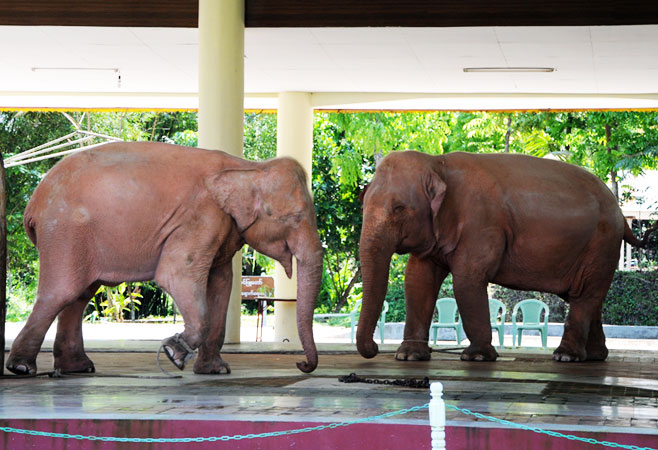ACTIVITIES
Fun Activities with Elephants
- Details
- Hits: 2289

Historical estimates of wild elephant populations in Myanmar have been extremely variable. Between the 1930s and the 1990s. 3.000 to 10.000 wild elephants have been proposed.
Taking positive action to protect the elephants is difficult without an idea of the distribution. current numbers. and rate of decline of the wild populations. There were international wildlife surveying teams convened a broad group of elephant experts in Myanmar to review current knowledge concerning the status of the country's wild elephants. The ultimate aim was to generate expert information on conservation issues dealing with wild elephants.
One significant conclusion from the workshop is that as few as 1.130 to 1.850 wild elephants may remain in Myanmar. This number is considerably lower than many recent estimates and suggests the wild elephant population could be in serious decline.
White elephants at Nay Pyi Taw
Different working groups compiled the elephant information in different ways. some of which we had not anticipated.
The most severe threats to wild populations in Myanmar seem to originate from habitat loss and people-elephant conflict that follows soon after elephant habitat has been converted for agricultural uses.
Most of the remaining large elephant populations are in Myanmar's forested hill regions stretching along the country's borders with Bangladesh. India. China. and Thailand. Where there is sufficient habitat on both sides of this border. the populations are likely to be contiguous and their long-term conservation and management needs to be addressed on both sides.
Myanmar elephant experts were able to identify several trans-boundary elephant populations that may need to be considered in regional conservation planning. These were located within the Kachin State to China; Sagaing Division to India; Rakhine State to Bangladesh; and the Kayah State and Mon State/Tanintharyi Division to Thailand.



